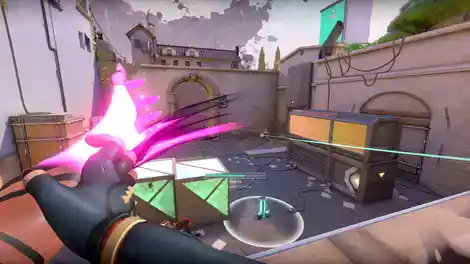Valorant Moves to Unreal Engine 5: Smaller Size, Better Performance
Riot Games has officially pushed Valorant into the future with its long-awaited migration to Unreal Engine 5.3, marking one of the biggest technical updates since the game’s launch. While the change might seem invisible at first glance, it lays the groundwork for major enhancements to performance, visuals, and gameplay quality in the months ahead.
A Seamless Transition with Big Potential
The upgrade from Unreal Engine 4.27 to 5.3 is designed to be nearly unnoticeable for players in the short term. Unlike some other games that faced stuttering or instability after adopting Unreal 5, Riot promises that Valorant’s performance will remain smooth, even slightly improved for some setups.
Behind the scenes, though, the upgrade is a huge win. Riot says the switch gives its developers more flexibility and tools to boost the game’s future development. That means cleaner animations, more immersive lighting, and better performance as the engine’s power is fully tapped in future patches.

Smaller Download, Bigger Engine
One bonus for players is a temporary reduction in Valorant’s file size. Due to improved compression and optimization in UE5, the game’s installation footprint has been cut in half, though Riot notes this change will only last until the next patch (11.03), when file size will return to normal.
Still, this is a welcome boost for players managing limited drive space, especially those juggling multiple live-service titles on one system.
Unreal Engine 5’s Key Features
The real star of this update is what Unreal Engine 5 brings to the table:
- Nanite rendering: Handles billions of polygons more efficiently, so you get sharper detail without losing frames.
- Lumen lighting: Delivers dynamic lighting that adapts to the environment in real time.
- Temporal Super Resolution (TSR): Enhances performance by rendering at lower resolutions while preserving visual clarity.
These features won't massively change your daily matches right now, but over time, they’ll contribute to smoother gameplay, faster load times, and more impressive visuals—potentially giving players an edge in decision-making and reaction time that could help boost their rank in tight matches.
What Patch 11.02 Actually Changes
|
Patch 11.02, the update housing this engine migration, doesn’t bring any gameplay buffs or nerfs to Valorant's Agent roster. Instead, it includes minor bug fixes, many of which improve user interface clarity and fix visual glitches tied to abilities. Players like Killjoy may see indirect improvements in consistency, while Agents such as Iso are reportedly impacted negatively, though not in any game-breaking way. |
 |
Riot has confirmed that these updates won’t change Valorant’s competitive meta immediately. However, better visual performance and more responsive systems may still boost your overall experience and reduce frustrating technical hiccups during ranked play.
New System Requirements
With the shift to Unreal Engine 5, Valorant’s minimum PC specs have changed. While the new requirements are still accessible to most gamers, older hardware may begin to struggle. If you’re serious about boosting your rank, now might be the time to consider a system upgrade to maintain smooth FPS and lower input lag.
Valorant’s Unreal Engine 5 update is a foundational leap that improves more than just graphics. It’s about laying the groundwork for a faster, more refined game in the years to come, without interrupting the current gameplay flow. Whether you're grinding out competitive matches or just hopping in casually, these upgrades could give you the edge you need to improve your performance long-term.

GG Boost, the Best Elo Boosting Experience!
 Deutsch
Deutsch  Français
Français  Español
Español  Português
Português